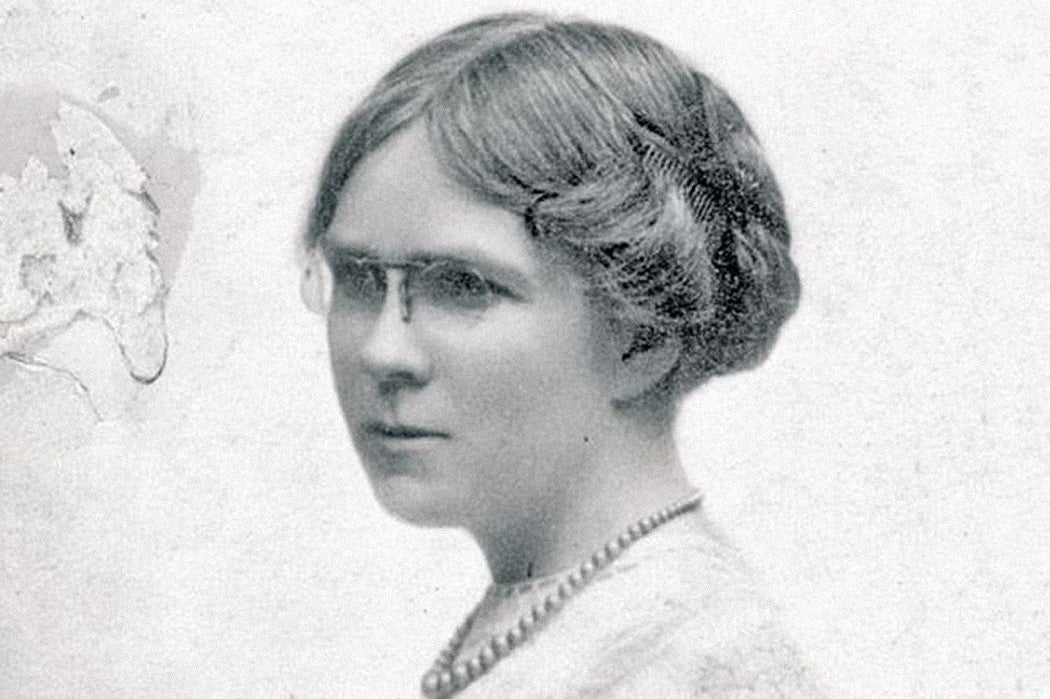Is a brainchild still your brainchild even when you don’t claim it as your own? This question could have been posed to British author Dorothy Miller Richardson (1873–1957). Though Virginia Woolf is often credited as the first woman writer to use a “stream of consciousness” method in her work, Richardson employed the technique some twenty years before did Woolf. So why isn’t she credited as often she should be?
As a narrative device, “stream of consciousness” allows characters’ inner musings to develop on the page as would a real thought process. Stylistically, this often results in an internalized monologue that incorporates unconventionally structured sentences and fragments. Proper punctuation may be omitted altogether, as old thoughts quickly transition into new ones. Literary critic Annika J. Lindskog suggests that “[t]he freedom from restrictive punctuation creates a flow in the text which represents the experience of reality through consciousness in the moment: unstructured and unstoppable.” Ultimately, it can create both challenges and rewards for the reader, inviting them into the inner workings of another’s mind.
Richardson was a journalist and novelist born in Abingdon, England. Educated both abroad and at home, she relocated to London in her adulthood to slip into the avant-garde intellectual crowd that dominated the artistic scene. While supporting herself with receptionist work, she began to write articles for prominent English periodicals. Her 1908–1912 witty short essays in the Saturday Review were such a success that, in 1912, an appreciative reader reached out to her and encouraged her to pen a novel. And so she did. In fact, she wrote thirteen of them.
Richardson opened with Pointed Roofs, the first “chapter” in what would become the multi-volume Pilgrimage. Based on Richardson’s own experiences, Pointed Roofs follows the protagonist, Miriam, as she works as a governess in Germany, much as Richardson had done. From there, Pilgrimage follows Miriam as she navigates cosmopolitan London as a working-class but intellectual woman who undertakes a rich spiritual journey. The reader follows her journey closely, pulled through her thoughts and impressions, one short sentence followed by the next, all compacted into brief chapters which eventually build into thirteen volumes.
Richardson’s style was noticeably different from classical writing.
“Indeed, the unbroken streaming of Pilgrimage is probably its most commented-upon stylistic feature,” notes Rebecca Rauve Davis. Davis argues that the flowing prose demonstrates that Richardson’s “aesthetic standards and practices [were] grounded in immanence,” which, as opposed to transcendence, locates the divine—and human consciousness—within the material world. Richardson’s “diffuse” style gave a materiality to thoughts and feelings, “blurring the boundary between self and world.”
Weekly Newsletter
Alexander Bain and William James first used the phrase “stream of consciousness” in 1855 and 1890, respectively. Literary critic May Sinclair was the first to deploy it in a literary context, using it in The Egotist in April 1918 to describe Richardson’s ability to get “closer to reality” through “Miriam’s stream of consciousness.” Richardson herself disliked and distanced herself from it, dubbing it, very unflatteringly, a “lamentably ill-chosen metaphor.” She disowned the term, so it abandoned her in turn.
Today, “stream of consciousness” is usually applied to the output of writers such as James Joyce, Marcel Proust, and Woolf. Richardson, whose books never achieved the same notoriety as those of this all-star group, is often left out of the conversation, even though she effectively pioneered the method. The question now is, how do we properly recognize her contribution? Do we respect her ardent wish to be detached from the phrase, or do we hail her as the founder of a modernist movement that defined a generation? This, like the business of trying to decipher a lengthy paragraph of unbroken psyche, is a tricky one.







